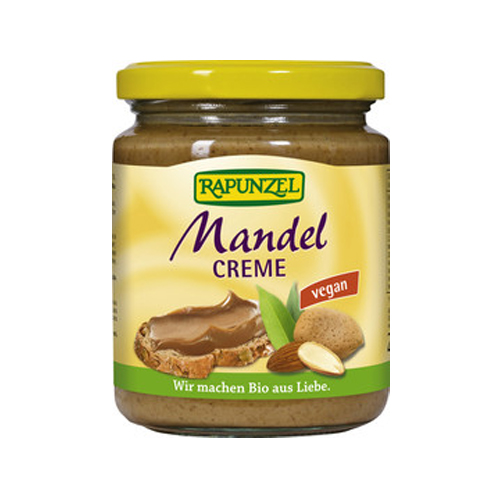Abstinence vs Harm Reduction Drug Treatment: Which Is Best?
- By Nanotel
- /
- Sober living
- |
- 97 Views
- |
- 0 Comment
Potential correlates of non-abstinent recovery, such as demographics andtreatment history, were based on NESARC results. Additionally, the survey asked about current quality oflife using a 4-point scale as administered by the World Health Organization (The WHOQOL Group 1998). Rather, when people with SUD are surveyed about reasons they are not in treatment, not being ready to stop using substances is consistently the top reason cited, even among individuals who perceive a need for treatment (SAMHSA, 2018, 2019a). Indeed, about 95% of people with SUD say they do not need SUD treatment (SAMHSA, 2019a).
Who Is Most Likely to Benefit from Moderation-focused Alcohol Treatment?
- These health risks can be severe, and some even contribute to alcohol-related mortality rates.
- We share an article “What’s the Difference Between Abstinence and Recovery” written and published by a peer recovery program in Colorado.
- Understanding the difference between drinking less and never drinking again, knowing when to quit and when to cut back, and learning how to do either successfully and safely is essential to reaching your goals.
- Although reducing practical barriers to treatment is essential, evidence suggests that these barriers do not fully account for low rates of treatment utilization.
- When someone struggles with drinking, they often have to decide how to make a change.
- Research indicates that 40–60 percent of risk factors are biological, so many family members choose to abstain if they know their background.
Individuals with fewer years of addiction and lower severity SUDs generally have the highest likelihood of achieving moderate, low-consequence substance use after treatment (Öjehagen & Berglund, 1989; Witkiewitz, 2008). Notably, these individuals are also most likely to endorse nonabstinence goals (Berglund et al., 2019; Dunn & Strain, 2013; Lozano et al., 2006; Lozano et al., 2015; Mowbray et al., 2013). In contrast, individuals with greater SUD severity, who are more likely to have abstinence goals, generally have the best outcomes when working toward abstinence (Witkiewitz, 2008). Together, this suggests a promising degree of alignment between goal selection and probability of success, and it highlights the potential utility of nonabstinence treatment as an “early intervention” approach to prevent SUD escalation.
Associated Data
For example, all studies with SUD populations could include brief questionnaires assessing short-and long-term substance use goals, and treatment researchers could report the extent to which nonabstinence goals are honored or permitted in their study interventions and contexts, regardless of treatment type. There is also a need for updated research examining standards of practice in community SUD treatment, including acceptance of non-abstinence goals and facility policies such as administrative discharge. Multiple versions of harm reduction psychotherapy for alcohol and drug use have been described in detail but not yet studied empirically. However, to date there have been no published empirical trials testing the effectiveness of the approach. Despite the growth of the harm reduction movement globally, research and implementation of nonabstinence treatment in the U.S. has lagged.
2. Established treatment models compatible with nonabstinence goals
A moderation approach may be recommended for those who prefer a gradual approach to progress. Here are additional reflection questions from a therapist to help you understand your own relationship with alcohol, and if moderation meets your needs and preferences. The earlier you contact an alcohol rehab, the faster the rehabilitation will be and the less damage alcohol will do to your health. Accurate, complete profiles best connect you with the right people for your services. Maintain your profile by updating your photos, video links, treatment services, and contact details to ensure optimal visibility. Recovery.com uses a standard procedure to make sure treatment provider profiles on our site are current and complete.
Abstinence vs. Drinking in Moderation: Which is Right for You?
Join our global mission of connecting patients with addiction and mental health treatment. There are no long-term studies that can provide concrete insights into the program’s success. But walk into any MM meeting and you’ll find people who boast that it’s the answer to their problems. Recent research in this field has shown that our previous understanding of how much we can drink without negatively impacting our health was incorrect.
Sample and Procedure
- This is especially true if you suffer from specific health conditions or are cutting back to avoid increased risk of specific health consequences.
- It is also important to note that profile 4 (high functioning, infrequent non-heavy drinking at year 3) had the best overall outcomes at year 10, despite the fact that some individuals in profile 4 had returned to some heavy drinking (average percent heavy drinking days of 10%) at year 10.
- Another possible option is using medications such as naltrexone or disulfiram along with psychotherapy.
- Every month, 150,000 people search for addiction or mental health treatment on Recovery.com.
How the risks of drinking balance out this potential benefit, if it is found to be causal, for those with Type II diabetes is not yet clear. Participants were asked about their substance use history; specifically, which drugs they used ten times or more times in their lifetime. Substances included, ‘alcohol’, ‘marijuana’, ‘cocaine’, ‘heroin’, ‘narcotics other than heroin’, ‘methadone’, ‘buprenorphine’, ‘amphetamines’, ‘methamphetamine’, ‘benzodiazepines’, ‘barbiturates’, ‘hallucinogens’, ‘synthetic marijuana/synthetic drugs’, ‘inhalants’, ‘steroids’, or ‘other’. The success of controlled drinking largely depends on an individual’s ability to consistently adhere to set limits and develop healthier coping mechanisms.
The WIR data do not include current dependence diagnoses, which would beuseful for further understanding of those in non-abstinent recovery. In addition, the WIRquality of life measure is based on a single question; future studies could useinstruments that detail various aspects of mental and physical functioning. WIR is alsocross-sectional by design, though it did include questions about lifetime drug and alcoholuse. Finally, the WIR survey did not ask about preferential beverage (e.g., beer, wine,spirits), usual quantities of ethanol and other drugs consumed per day, or specificsregarding AA involvement; because these factors could impact the recovery process, we willinclude these measures in future studies.
Consider the health benefits
Participants were asked, “How long has it been since you resolved your problem with alcohol/drugs? For our analyses we coded time since resolving an AOD problem in total years with decimal places. Harm reduction treatments were designed to “meet people where they are” and with the philosophy that there is no “one size fits all.” It shifts the focus away from the problematic use itself and more about the harmful consequences of the behavior.
Despite a long-lasting history of successful abstinence-based treatment, some behavioral health experts believe that abstinence may be too difficult for certain individuals to achieve. Alcoholics Anonymous (AA), which began in 1935, was the first addiction program that encouraged complete abstinence. Today, most addiction recovery centers use the Minnesota Model of abstinence-based treatment. Created in the 1950s, this abstinence approach relies on 10 foundational beliefs. Even though the model was initially created for alcoholism, the approach is now used for all types of addiction. Multivariable stepwise regressions (Table2) show that younger individuals were significantly more likely to benon-abstinent, and movement to the next oldest age category reduced the odds ofnon-abstinence by an average of 27%.
NIAAA explains in great detail how alcohol affects your brain and the stages of the addiction cycle. For people choosing recovery, alcohol abstinence is preferred to not only help the brain and body break chemical dependency but also to encourage a shift in behavior and emotional regulation. Wes Arnett is based out of Madison, Wisconsin and is the Category Manager of Recovery Coaching at Recovery.com, where he aspires to spread hope to those seeking addiction and mental health treatment through increasing awareness of recovery coaching and peer support. Given that non-abstinence has been shown to be a less stable form of alcohol use disorder remission, it is possible a subset of these individuals will ultimately try the abstinent pathway. The first step in quitting drinking or cutting back on alcohol is to request an assessment by a licensed professional. The assessment gathers information about your alcohol history, your family’s history of addiction, how alcohol impacts your life, and your future goals.
Individuals with greater SUD severity tend to be most receptive to therapist input about goal selection (Sobell, Sobell, Bogardis, Leo, & Skinner, 1992). This suggests that treatment experiences and therapist input can influence participant goals over time, and there is value in engaging patients with non-abstinence goals in treatment. In addition to shaping mainstream addiction treatment, the abstinence-only 12-Step model also had an indelible effect on the field of SUD treatment research. Most scientists who studied SUD treatment believed that abstinence was the only acceptable treatment goal until at least the 1980s (Des Jarlais, 2017). Abstinence rates became the primary outcome for determining SUD treatment effectiveness (Finney, Moyer, & Swearingen, 2003; Kiluk, Fitzmaurice, Strain, & Weiss, 2019; Miller, 1994; Volkow, 2020), a standard which persisted well into the 1990s (Finney et al., 2003). Little attention was given to whether people in abstinence-focused treatments endorsed abstinence goals themselves, or whether treatment could controlled drinking vs abstinence addiction recovery help reduce substance use and related problems for those who did not desire (or were not ready for) abstinence.
-
Transport gratuit in Ploiesti
-
Telefon: 0746.216.034
-
Livrare 24/48 h
-
Produse Certificate




Lasă un răspuns